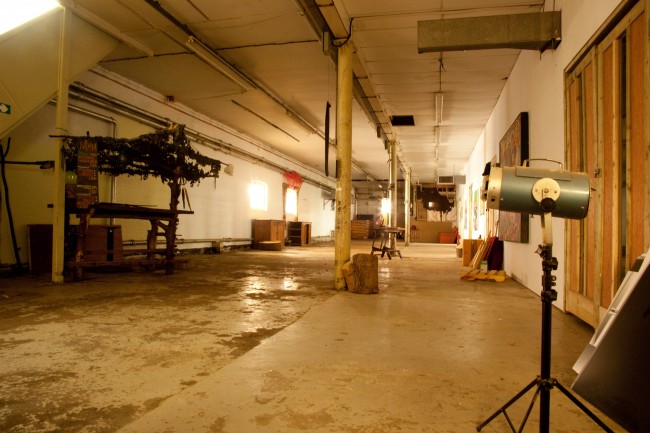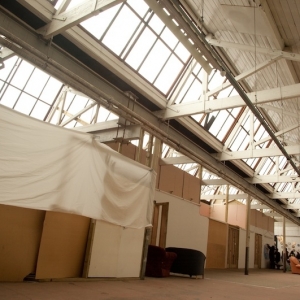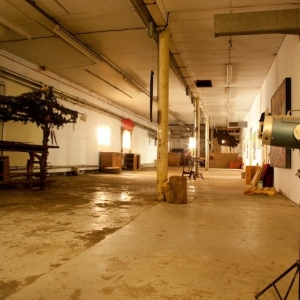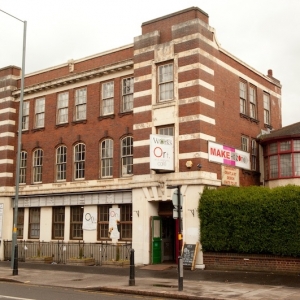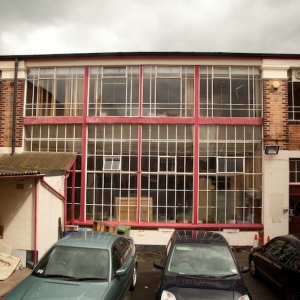City centres are re-worked, buzzing with culture and consumption.
Public art and re-vamped galleries are in every town. Artists have become household names, with immediately recognisable pieces towering over the North and the South.
It’s well documented that high streets haven’t undergone such a positive transformation. Treasured brands have collapsed and been replaced by quick cash alternatives that are morally disputable.
The solutions are well advised; both hands have grasped Portas and Polizzi, metaphorically speaking.
The relevant government department has responded by producing a document, which should guide decision making at a local level.
“Re-imagine urban spaces to help revitalise our high streets,” Department for Communities and Local Government (DCLG) tell us. Be creative. Do it now, in partnership, in budget, before 5pm!
‘The next step is over to you,” we are told and given many examples of creatively (and beautifully) transformed outdoor space, some art in shop fronts, and some festivals and events.
All look good, but there is not much indication of the all-important source of the magic seeds. Jack can’t grow his beanstalk without them.
Where to start with places in the outer core of cities or places like Balsall Heath, Birmingham where the majority of businesses serve food that doesn’t count as any of the five a day? High streets that are dilapidated and have been for years.
They are not simply suffering from decline as a result of the current recession but are in a seemingly permanent state of dereliction. These places may still have remnants of architectural investment, possibly some gems that have been unblemished by the ‘smash the facade and insert fixtures and fittings’ style of retail development that belongs to past decades.
Buildings that are on the border line of architectural significance; places that house the remnants of change.
Such a place is The Old Print Works in Balsall Heath. No heritage grant for this building that takes up most of a block, no developer paying the architects fees, no per cent for art.
So what of it? What should it become; simply a source of (depleting) revenue for the owners who have short-term objectives? The current managers think they know what it needs.
“If we were to look at this in business terms we would make a hotel. There is the market for it,” says Operations and Development Manager, Gurminder Sehint MBA.
She’s probably right; sitting less than thirty minutes away from Birmingham city centre or airport, and on the edge of the Balti Triangle it’s a prime spot. It’s not the right course of action though.
It doesn’t fit with the creative aims of this organisation. It doesn’t sit well with the quirky, gritty feel that opens its arms to collaboration, design and experiences.
The 3000 sq ft building grew over time, with four distinct architectural styles spliced together physically demonstrating the growth of the original printing business and its achievements in the market. The 1880s façade that sits opposite the handsome public baths has extended backwards and sideways over a century.
At the front, wooden floors give a musky smell and thick sliding factory doors separate bare wooden staircases. The corridors lead to rooms with carpet tiles and 1980s cork notice boards festooned with brands and logos.
They are the symbols produced by the printing company, the ones that led to its expansion. They were a mark of pride, showing the array of customers that the now defunct company had.
Now none of them are recognisable; they were transient like many companies. Riding on particular economic waves. Their ancestors have taken their place, perhaps in energy hungry purpose built retail parks, industrial estates and business parks for the millennium.
The new users have a different ambition. One that is focused on giving the community in Balsall Heath a place to be social entrepreneurs. With a broad range of objectives that spread across community, sustainability, design and making.
The new face on the high street is vibrant with creativity, and it seems to be working. A specialist bread maker, music tuition, artist’s studios, arts and crafts exhibitions, café, wood and metal workshops, performance space, community darkroom, an urban forge, and lots more fill the spaces.
Behind doors and inbetween there is a sense of unpolished, unprogrammed making that brings people together. Experiences are taking place in the daytime and night amidst the energy of the building. People are trading in time.
The role of commercial activity in its current use is less clear, less aspiring towards a linear model of growth than in previous guises. The parameters for commercial activity are not set in stone; rather they are dependent on a sense of value to the community, an instinctive reaction to their integrity.
The rent has to be paid and the coffers balanced, but the aims are social, creative, human. When a suggestion is made to the managers, to supplement income with occasional temporary rental by high profile brands (such as Adidas) it is positively toxic in the room.
The notion is repellent to the charitable aims of the board and managers.
Rents charged to tenants are subsidised. They don’t add up to the total of the rent and running costs of the building.
Previously secured subsidy is running low too and the direction for re-stocking isn’t clear. Many of the traditional sources of funding for community, creative or sustainable projects have been obliterated.
Is it possible to balance social and creative objectives with business processes? Perhaps this is a tired discussion; charities have been doing it for years. As a former senior employee of Birmingham City Council’s Arts Team, Germinder understands both and is ambitious to make them work at The Old Print Works.
This place has a value to the community, DCLG tell us. It is the type of activity that can re-energise high streets, putting life back into them.
Is this the same value that Tesco gives? What weight is the creative or artistic value? In the absence of clear guidelines how could these be measured? How could the impact be demonstrated? What is its value to the local community?
Questions asked as people sit sharing ideas, children focus on engaging tasks, people make, watch and learn. Artists arrive with precious canvases, laptops and musical instruments.
It’s beyond the simple question of how to record qualitative outputs, or outcomes. A case study, a logic model, an emotion heavy quote or photo could make the case. The scale is often small with these methods, so to lever larger amounts of money takes the numbers.
The quants aren’t so useful. They have oft been unsatisfactory when applied to creativity, resulting in will-o-the-wisp propositions and promises made to secure funding for creative and artistic projects.
Many an output framework has failed in the context of creativity, culture and arts. Something floats on the wind that cannot be captured by the types of outputs that formed the superstructure of the regional development agencies.
The Print Works is certainly doing many things beyond animating the high street and the community in Balsall Heath. In social terms the personal stories speak volumes about the loneliness, depression, and isolation overcome by taking part.
In economic terms perhaps this is the nursery for the creative industry that Doug Richard of Dragon’s Den tells the business community is the secret to economic growth. Worth £36bn a year to the British economy generating £70,000 a minute, accounting for £1 in every £10 of UK exports and is the envy of the world, he states.
The key to fuelling this industry which is the route to economic growth for Britain isn’t about finding high value companies such as Google, he says, it’s about investing in the creativity of the individual, about people having the space to become what they want to be.
The Old Print Works is one of those places. It paves the way for social, economic, cultural and physical regeneration.
This is more than managed work space for creative small and medium enterprises. People are making it happen here, carving out a niche for something to take place that isn’t the famous Bull-Ring, Birmingham Museum and Art Gallery or Custard Factory.
Something local, something on their high street, something that isn’t a pound shop or a charity shop, and it doesn’t cost the earth to become part of it.
Across Europe there are many cultural centres; they struggle but they operate as creative breeding grounds; as places to grow ideas, stop for a coffee, see visual art, watch performances, make and learn.
Westergasfabriek, Amsterdam; Kaapelitehdas, Helsinki; Antic Teatre, Barcelona; A38, Budapest; Interzona, Verona and more. All are unique, often sharing the need for voluntary and public funding support.
Strong leadership is paramount for the essence, the vibe of this endeavour to be maintained. A strong leader has taken the Old Print Works to this point and secured some funding but that was before the significant reduction in the public sector budgets that would fuel this invaluable activity.
The regeneration sector needs to identify these bottom-up examples and work with the local creativity and talent to grow what is sustainable, creative and genuine.
